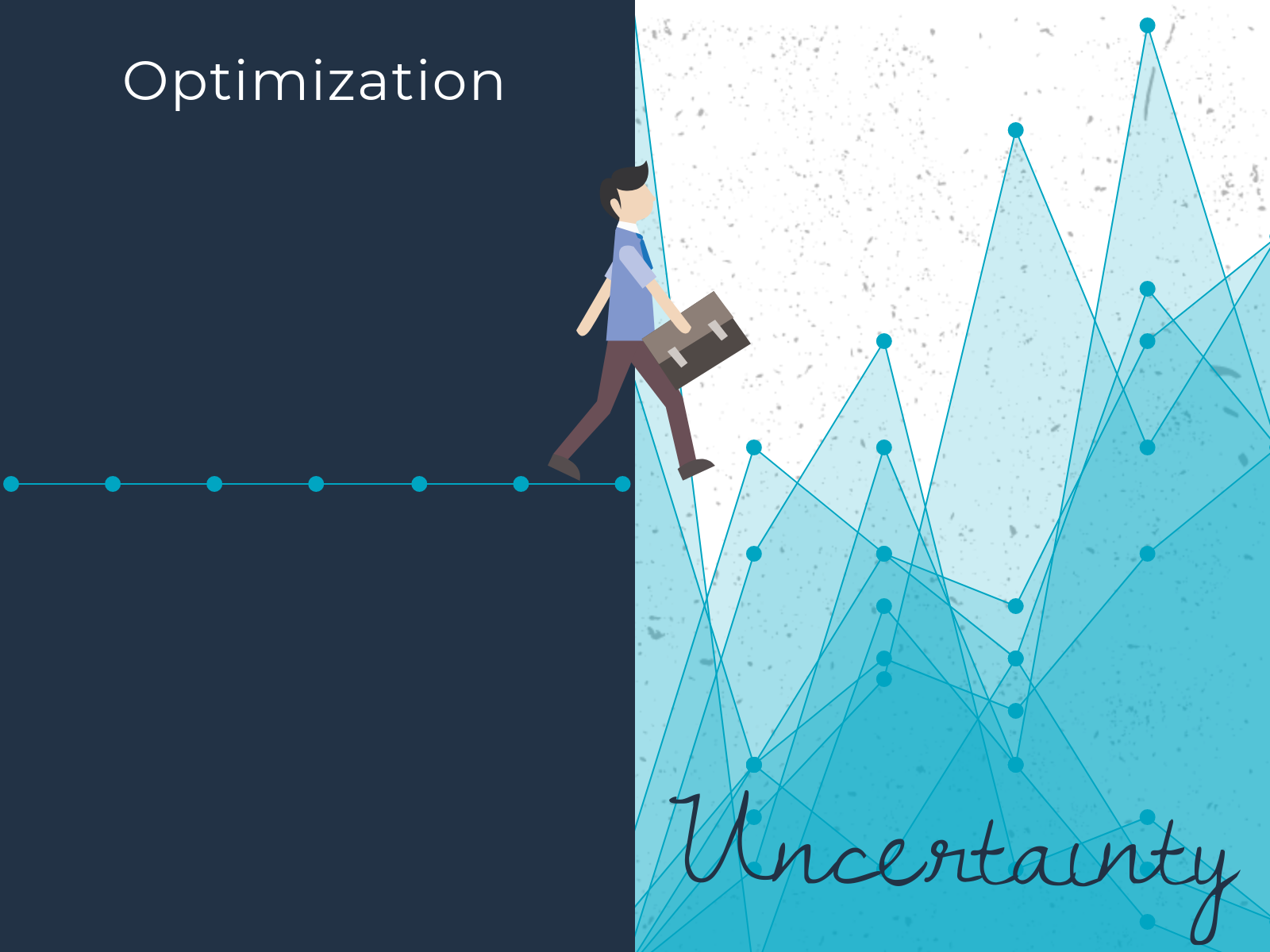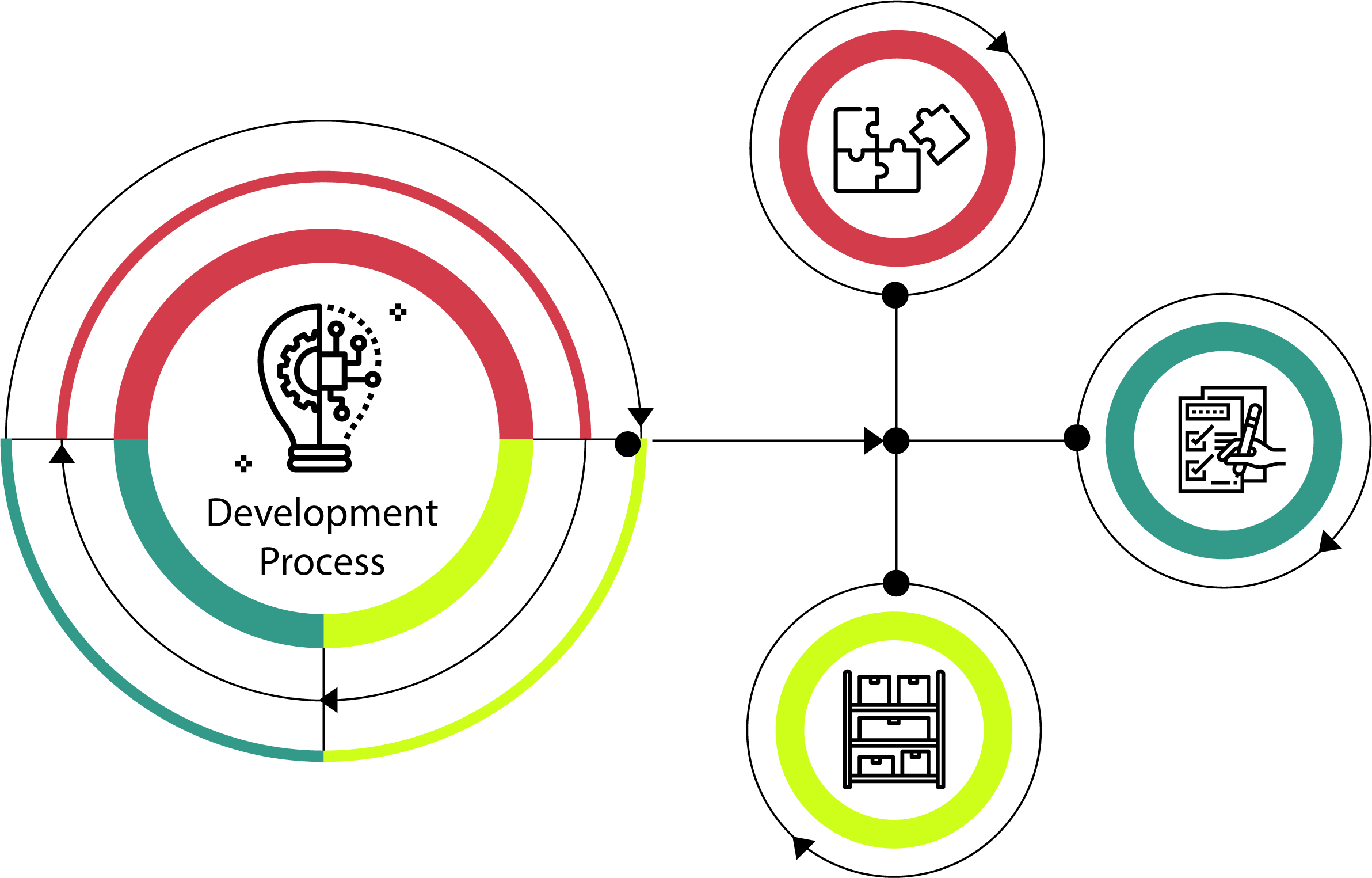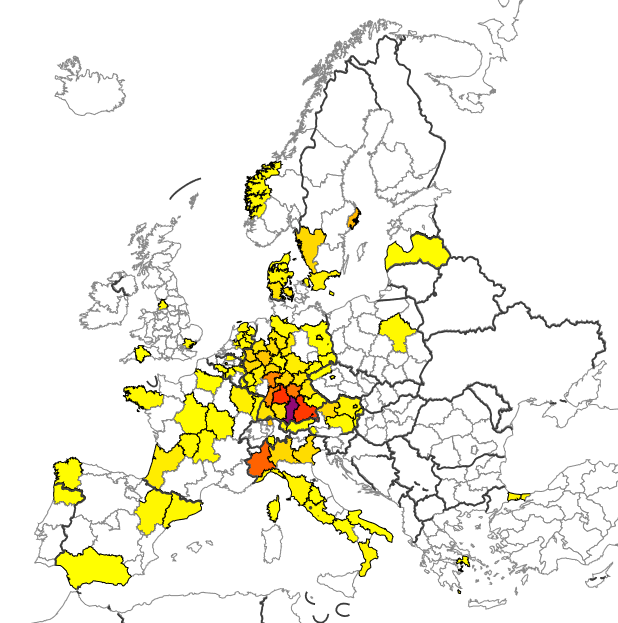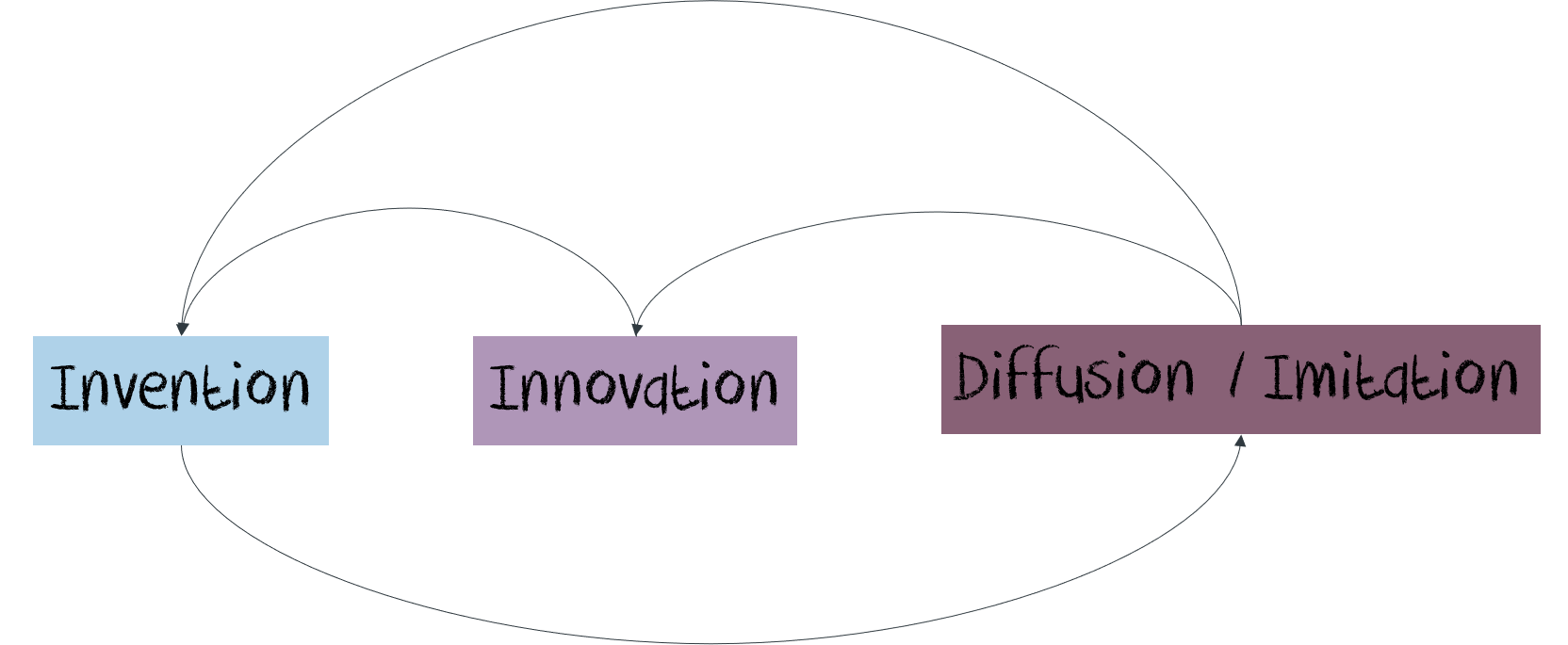Innovation Economics
How innovation economic systems work around research and development?

Many aspects of the design of a technological solution are decided upon rather early on in the process of researching, specifying, and materializing a robot, but consequences thereof become clear only later, often in tests, pilots, or even actual implementation.
As such, it makes sense to discuss when, why, and how robot developers (should) make particular design decisions, and when, why, and how stakeholders are involved to provide input, co-develop technology, etc.
New Product Development Process
While there are well-crafted methodologies to assist developers, these do not alleviate engineers of having to cope with intricacies in complex technology development. This includes having to:
- Decompose and distribute tasks (with various, possibly unintended consequences)
- Fix either (hypothetical) user requirements or technical specifications at some point in time (under uncertainties about consequences thereof)
- Iterate through development process stages upon encountering issues
- Decide when to use accumulated technology, rely on standard methods and tools, and when to develop something afresh

Ethnographic Findings and Methodological Ramifications
Ethnographic studies identify three additional complications in the (organization of the) development process:
- Development decisions are often taken in a distributed and decentralized fashion.
- Robot developers frequently encountered complications in fixing user requirements that go beyond mere market uncertainty (or specification sequentiality)
- Robot developers necessarily have (more or less) specific user requirements and application environments in mind when researching, developing, and designing their robot.

Meso-Level Organization of Development

The primary source of the competitive advantage of a firm is its current stock of technological knowledge, its capability to acquire and create novel knowledge, and its ability to commercially exploit that knowledge in innovation. Given the technological developments by head-on rivals or research institutes in the same, related, or yet unrelated sectors, firms have to monitor, screen, filter, acquire, and put to use technological knowledge from outside the firm into new products or services.

Regional Clusters, Catching-Up and Falling Behind
Density of the NUTS2 location of inventors patenting robot technologies (REGPAT data until February 2016). A darker shade means more inventors mentioned in patents are located in that particular NUTS2 region. A region is blank if no inventors were registered in the REGPAT data.
Given the changes over the industry lifecycle of the type of innovation activities (from product to process innovation), the shifts in the characteristics of knowledge (from tacit to more codified, from ‘alien’ to ‘familiar’), it may well be so that also the governance form of collaborations and dynamics and structure of the innovation network changes over time.
Technological Change and Social Construction
So far, the agenda of research & development activities of robot developers was largely determined by the goals of product development, defined by the technological role in innovation networks, and the accumulation of technology in the robotics(-related) sector(s) over the course of the consecutive industry lifecycles.
However, particularly over the long-term, there may be considerable changes in requirements of customers, the application environments, expectations and (public) opinions of stakeholders, the institutional and infrastructural arrangements, legal and ethical conditions, policy instruments in place, etc. So, society evolves and in part even due to the introduction of the focal (and possibly impactful) technology.
Technological change is pictured as a process in which technology was first invented (‘new to the world’), then innovated (i.e. tailored to commercial use in a particular, new market), and then diffused (i.e. spread across both producers and consumers through imitation). Similarly, it was pictured as process in which academics conceive scientific concepts (fundamental research), engineers subsequently materialize these concepts into technology (applied research), and entrepreneurs finally bring the technology embedded in products to the market.

- Dilemma of Specification Sequentiality: Fundamental dilemma in new product development that requires a developer to either fix technological specifications to determine detailed user requirements or assume user requirements to determine basic specifications for technology to develop. Both decisions limit future options. The solution proposed here is to ‘bootstrap’ out by alternating between obtaining user feedback with increasingly more specific designs and trying to materialize new product technology based on increasingly more concrete user requirements.
- Uncertainty: Property of technology and market research as well as product development & design activities that economic actors need to cope with.
- Technology Transfer: The process of adapting technology to particular usage or in an environment different from when originally conceived.
- Incremental vs. Radical Innovation: Two types of innovation. Incremental innovation concerns mere extensions of the existing design, consolidating the existing paradigm. Radical innovation introduces a new paradigm, generally a breakthrough increasing the performance in some dimension(s) in the order of several magnitudes.
Key Concepts
Reflection Points
- How do you acquire the technological knowledge required for new developments? How do you manage collaborations with other teams?
- How do you go from invention to innovation? Is this a linear process?
- Do you think that there is a need for new design and development practices in robotics?
- Is the inclusion of the affected stakeholders in the process an added value in terms of innovation?
Concluding Remarks on Innovation Economics
We analized the process of researching, developing, and designing robots over short-term new product development processes within endogenously evolving innovation networks facing industry lifecycle challenges, long-term technological change, and a changing society.
We adorn a stylized new product development method, notably recognizing that roboticists have to:
- Bootstrap out of a situation fraught with market and technological uncertainty
- Modularize robot designs and iteratively and recursively solve technical bottlenecks therein
- Conduct repeated develop-test-plan cycles thereby possibly extending the set of stakeholders involved over time in a staggered fashion.
If you found this interesting, read more here:
Click here to Download Chapter 6: Innovation Economics
Download
If you enjoyed reading about Innovation Economics, you may also like:
By going over each icon with the mouse you will get a brief description of the corresponding topic.